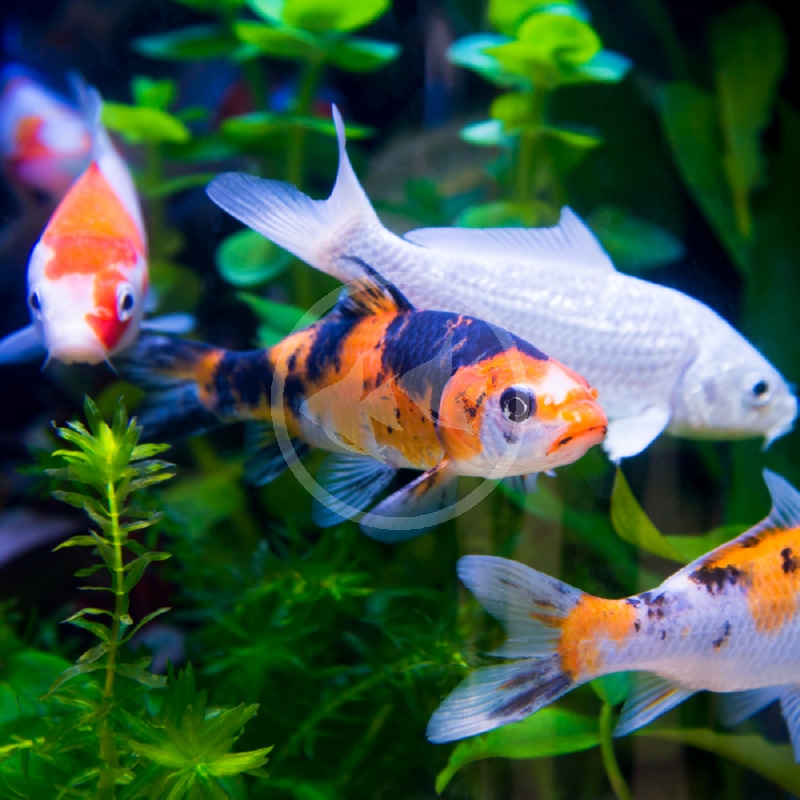Welcome to the world of pond fish decoration! As someone who has spent countless hours creating a serene water garden, I can personally attest to the joy and tranquility that pond fish bring to an outdoor space. Not only do they add vibrant colors and life to your pond, but they also contribute to a healthy ecosystem. In this guide, we will explore everything you need to know about choosing and caring for pond fish, enhancing your pond’s aesthetic and ecological value.
Understanding the Importance of Pond Fish
Pond fish serve as more than just decorative elements; they play a crucial role in the ecosystem of your water garden. They help control mosquito populations, contribute to the nutrient cycle, and can provide a calming element to your outdoor space.
The Aesthetic Appeal of Pond Fish
Imagine a tranquil garden pond glimmering in the sunlight, with colorful fish swimming gracefully. The visual appeal of pond fish can transform your outdoor area into a picturesque retreat.

Enhancing Your Landscape
- Color Variety: Different species come with a range of colors, from the bright oranges of koi to the muted tones of goldfish.
- Movement: The gentle movement of swimming fish adds a dynamic element to the serene waterscape.
- Interaction: Feeding your fish and watching their behavior can create a bond, making your outdoor space more engaging.
Types of Decorative Pond Fish

Choosing the right fish for your pond is essential to create a harmonious environment. Here are some popular options:
Koi Fish
Koi are perhaps the most iconic pond fish. They are not only beautiful but also symbolize perseverance and strength in Japanese culture.

Pros and Cons of Koi Fish
| Pros | Cons |
|---|---|
| Long lifespan (up to 200 years) | High maintenance needs |
| Wide variety of colors and patterns | Can grow quite large (up to 3 feet) |
| Social and interactive | Requires large, well-filtered ponds |
Goldfish
Goldfish are another popular choice, known for their hardiness and relatively low maintenance.

Pros and Cons of Goldfish
| Pros | Cons |
|---|---|
| Easy to care for | Can produce large amounts of waste |
| Variety of breeds and colors | Smaller size compared to koi |
| Compatible with many other species | May be prey for larger fish |
Other Popular Pond Fish
- Shubunkin: Known for their calico patterns and hardiness.
- Orfe: Excellent swimmers that add movement to the pond.
- Fancy Goldfish: Unique shapes and sizes (e.g., Ranchu, Fantail).

Setting Up Your Pond for Fish
Creating a suitable environment is crucial for the health and longevity of your pond fish. Here’s how to set it up effectively:

Pond Size and Depth
Your pond’s size and depth can significantly influence fish health. Koi, for instance, require a deeper pond (at least 3 feet) for adequate swimming space and to survive winter.
Water Quality Management
Water quality is paramount. Here are key parameters to monitor:
- pH Level: Maintain between 6.5 and 7.5.
- Temperature: Koi thrive in 65°F to 75°F, while goldfish can tolerate cooler waters.
- Oxygen Levels: Use aeration systems to keep oxygen levels high, especially during hot months.

Filtration Systems
Choosing the right filtration system helps keep your water clean and clear. Here are some options:
- Mechanical Filters: Remove debris and particles from the water.
- Biological Filters: Help break down harmful substances.
- UV Filters: Control algae growth and improve water clarity.
Feeding Your Pond Fish
Nutrition is key to healthy, vibrant fish. Here’s a basic guide on feeding:
Types of Fish Food
- Floating Pellets: Good for koi, allowing you to observe feeding behavior.
- Sinking Pellets: Suitable for goldfish, who prefer to forage at the bottom.
- Live Food: Provides a nutritional boost during warmer months.
Feeding Frequency and Quantity
Feed your fish 2-3 times a day, providing only what they can consume in 5-10 minutes to prevent overfeeding and water contamination.
Seasonal Care of Pond Fish
Pond fish require different care throughout the seasons. Here’s what you need to know:
Spring
- Begin feeding fish as water temperatures rise.
- Perform a thorough cleaning of the pond, removing debris from winter.
Summer
- Monitor water temperatures and oxygen levels closely.
- Provide shade in extreme heat with aquatic plants or structures.
Fall
- Reduce feeding as temperatures drop.
- Prepare for winter by removing any fallen leaves and debris.
Winter
- In colder regions, ensure your pond is deep enough for fish to stay below the ice.
- Use a de-icer to prevent the water from freezing completely, ensuring oxygen exchange.
Conclusion: Creating Your Dream Pond
With the right knowledge and care, your pond can become a beautiful oasis filled with vibrant fish that enhance your outdoor living space. By carefully selecting the right species and maintaining a healthy ecosystem, you can enjoy the serenity and joy that pond fish bring. If you’re ready to dive deeper into the world of pond decoration, the journey awaits!
FAQs about Pond Fish Decoration
What is the best type of fish for a decorative pond?
The best type of fish depends on your pond’s size, depth, and your personal preference. Koi and goldfish are popular choices due to their hardiness and visual appeal.
How do I maintain water quality in my pond?
Regularly test pH levels, maintain proper filtration, and monitor oxygen levels to ensure a healthy aquatic environment.
Can I mix different fish species in my pond?
Yes, many fish species can coexist peacefully. However, be cautious of size differences and predatory behavior.
How often should I feed my pond fish?
Feed your fish 2-3 times a day, ensuring they can eat all the food within 5-10 minutes to avoid overfeeding.
What should I do during winter for my pond fish?
Ensure that your pond is deep enough to protect fish from freezing. Use a de-icer to maintain an opening in the ice for gas exchange.